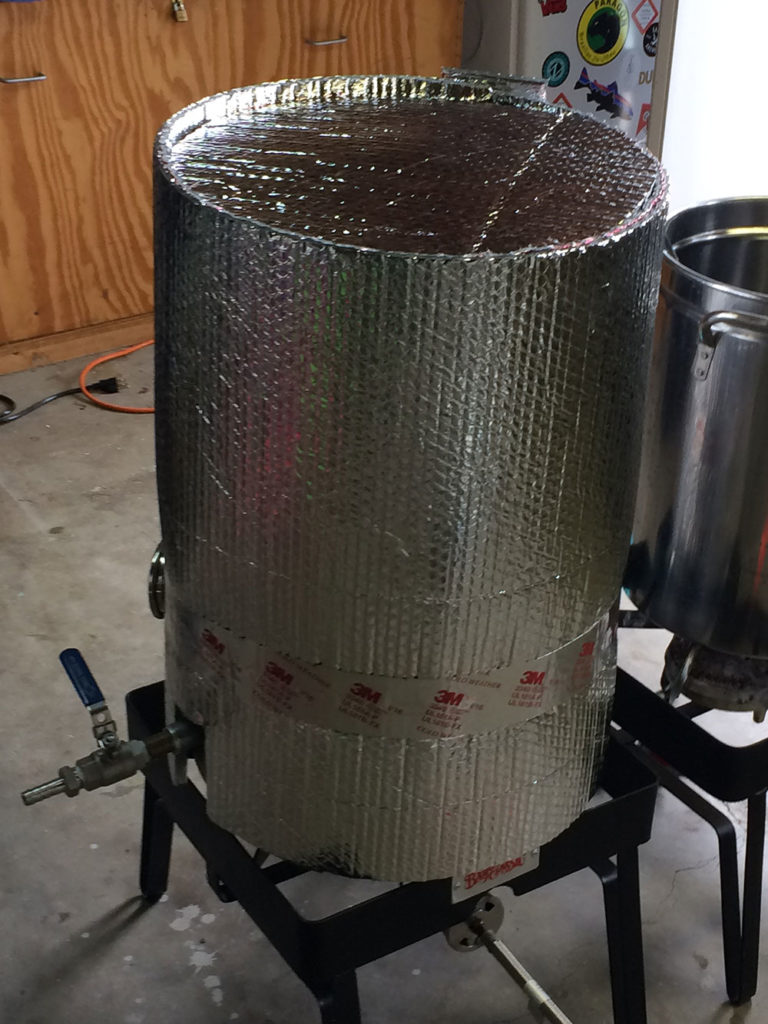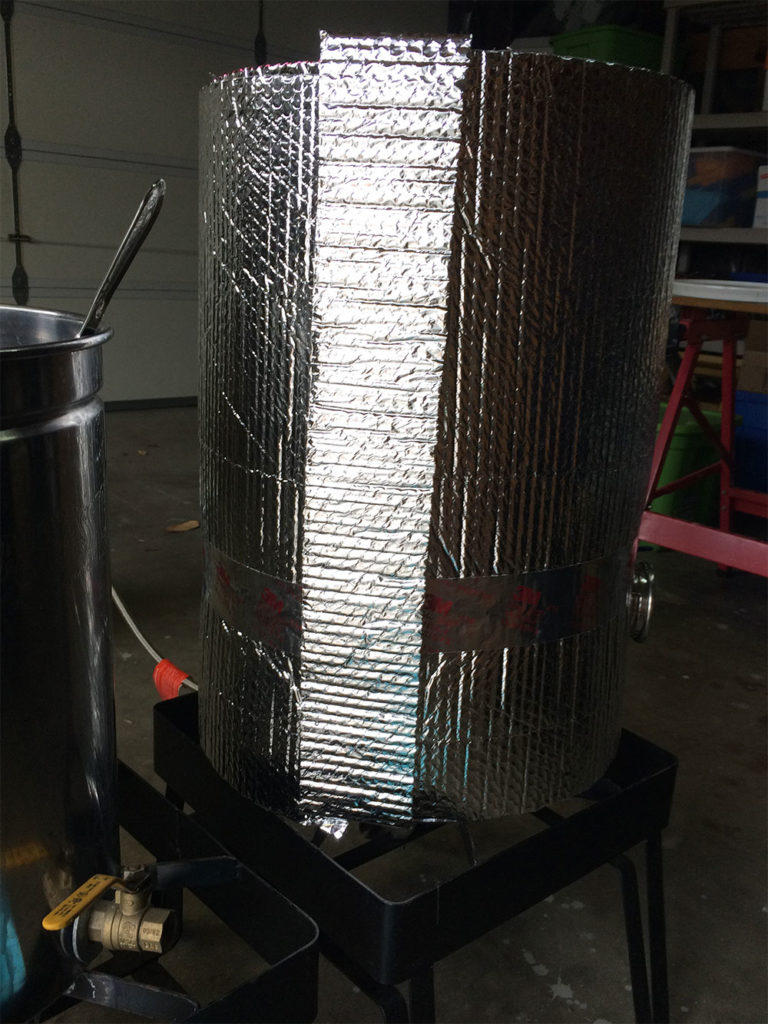I have been trying to dial in a good base for my paler beers and tired of dealing with Ventura’s hard water, I put my thinking cap on and came up with adding a pound of caramel 20 and a pound of white wheat to smooth things out in my pale ales and IPAs. I’ve noticed that anything that attempts to be dry to showcase the hops like a west coast IPA just comes out too dry with hard water. On the other hand anything with some crystal or caramel in it is much smoother. I think it was a good choice.
I got a real good deal on a bunch of Stella, the Australian super Saaz, 7C’s, and Saphir hops. The Stella smelled awesome, but the 7C’s maybe had seen better days with little aroma, while the Saphir was in good shape. Saphir is quite a fragrant and under appreciated hop with a really nice citrus and fruit note in the nose.
After using both the Stella and 7C’s for bittering and aroma, I then decide to dry hop in the fermenter with the reamining 7C’s and a little Saphir and then dry hop in the keg with Saphir.
This beer turned out to be a real stunner – perfect body with just a hint of sweetness and a gripping smooth bitterness. Tropical and stone fruit aroma with just a hint of citrus and mint in the taste. Very, very easy to guzzle this beer down by the imperial pint.
6 gallons
Estimated OG: 1.058
Estimated FG: 1.014
Estimated Color: 6.6 SRM
Estimated IBU: 56 IBUs
Brewhouse Efficiency: 65.00 %
ABV: 5.8%
Grain
13 lbs Pale 2 Row (2 SRM) 86.7%
1 lbs Crystal 20 (20 SRM) 6.7%
1 lbs White Wheat (3.2 SRM) 6.7%
Schedule
60 minute Boil
28.00 g Stella [15%] – 60 min 43.3 IBUs
28.00 g Stella [15%] – Whirlpool 10 min 7.9 IBUs
28.00g 7C’s [9.5%] – Whirlpool 10 min 5 IBUs
28.00g 7C’s [9.5%] – Dry Hop 3 days (4th day of fermentation)
14.00g Saphir [3.5%] – Dry Hop 2 days (end of fermentation)
14.00g Saphir [3.5%] – Dry Hop in keg
Whirfloc or Irish Moss 20 min
1tsp yeast nutrient 15 min
Mash and Sparge
50% RO water
50% Ventura (high bicarbonates and sulfates)
2g Calcium Chloride added to mash water
4ml lactic acid added to mash water
2g Calcium Chloride added to sparge water
2ml lactic acid sparge water
Mash in 4.75 gallons water 163F and let stabilize to 152F for 60 min
Mashout 170F
Batch sparge 4.75 gallons cold
Yeast
WLP 007 Dry English Ale
Fermentation
Ferment until done 65F
Day 4 of fermentation add first charge of dry hops
End of fermentation add rest of dry hops for 2 days
Cold crash one day
Add gelatin and rack to keg and carbonate using your preferred method


